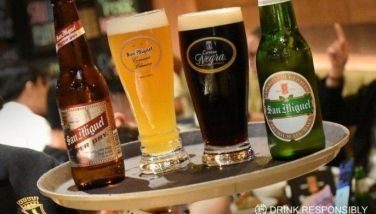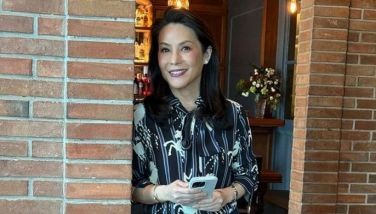Great educator
September 2, 2002 | 12:00am
Some time in the 1950s or early 1960s there was considerable criticism of Chinese schools. There was even a move to have the matter investigated in the Senate.
The reason for the agitation was obvious. The Chinese schools at that time were not under the jurisdiction of the Philippine Department of Education but under that of the Chinese Ambassador from Taiwan. Those schools (reportedly) flew only the Chinese flag. The history taught was that of China. In short, they were schools under foreign jurisdiction intended to educate Chinese children for Chinese citizenship.
One of the Senators asked me about the Jesuit schools for the Chinese, and other Catholic schools. Were they also like the other Chinese schools?
For information, I went to the man who knew best, Father Jean Joseph Desautels S.J.
He was a Canadian from Montreal who, after obtaining his bachelor’s and licentiate degrees in Canada, volunteered for the Chinese mission. He spent some time in Peking learning the Chinese language, and then studied theology for four years at the famous theologate in Zeikawei. He was ordained a priest in Shanghai.
He was in Canada when the Communists closed the Catholic schools and expelled the missionaries. Awaiting a chance to return to China, Desautels enrolled at Harvard for advanced Chinese studies.
One of the schools closed by the Communists was the Jesuit school for the Chinese language in Peking named Chabanel Hall. Father Desautels received a commission from the Jesuit Superior General to reopen the school "anywhere in Asia". Desautels chose the Philippines.
With the help of Father Leo Cullum, Superior of the Philippine Jesuits, he bought a complex of quonset huts in the middle of a field in Mandaluyong, which the Americans had used as a field hospital during the war. There he reopened both Chabanel Hall, and also a seminary for Chinese secular priests.
In 1955, Father Desautels did what was to become his chief legacy. He opened a school for Chinese boys. At first located in Quiapo and named Quangchi (after one of the notable converts of Father Matteo Ricci in the 17th century). Desautels later relocated the school in Greenhills and renamed it Xavier School. That school is now one of the best in the Manila area, and is attended not only by Chinese but also by Filipinos.
Xavier School in Greenhills was the second school for the Chinese opened by the Jesuits. Two years earlier, Father Francisco Heras had opened one in Cebu, named Sacred Heart School. And a few years later, a third school was opened in Iloilo, named Santa Maria by Father Santiago Leon.
These schools, said Father Desautels, were not "Chinese" schools. They were Philippine schools with a program of Chinese studies. They are under the jurisdiction of the Philippine Government, recognized by the Bureau of Private Schools. They fly only the Philippine flag. In the weekly flag ceremony they sing the Philippine, not the Chinese, national anthem. And the history taught is what is taught in other Philippine schools, namely Philippine history, World history and Oriental history.
In short, these schools are Philippine schools, intended primarily for Chinese students but also attended by Filipinos to prepare them for life and citizenship in the Philippines.
The reason for the agitation was obvious. The Chinese schools at that time were not under the jurisdiction of the Philippine Department of Education but under that of the Chinese Ambassador from Taiwan. Those schools (reportedly) flew only the Chinese flag. The history taught was that of China. In short, they were schools under foreign jurisdiction intended to educate Chinese children for Chinese citizenship.
One of the Senators asked me about the Jesuit schools for the Chinese, and other Catholic schools. Were they also like the other Chinese schools?
For information, I went to the man who knew best, Father Jean Joseph Desautels S.J.
He was a Canadian from Montreal who, after obtaining his bachelor’s and licentiate degrees in Canada, volunteered for the Chinese mission. He spent some time in Peking learning the Chinese language, and then studied theology for four years at the famous theologate in Zeikawei. He was ordained a priest in Shanghai.
He was in Canada when the Communists closed the Catholic schools and expelled the missionaries. Awaiting a chance to return to China, Desautels enrolled at Harvard for advanced Chinese studies.
One of the schools closed by the Communists was the Jesuit school for the Chinese language in Peking named Chabanel Hall. Father Desautels received a commission from the Jesuit Superior General to reopen the school "anywhere in Asia". Desautels chose the Philippines.
With the help of Father Leo Cullum, Superior of the Philippine Jesuits, he bought a complex of quonset huts in the middle of a field in Mandaluyong, which the Americans had used as a field hospital during the war. There he reopened both Chabanel Hall, and also a seminary for Chinese secular priests.
In 1955, Father Desautels did what was to become his chief legacy. He opened a school for Chinese boys. At first located in Quiapo and named Quangchi (after one of the notable converts of Father Matteo Ricci in the 17th century). Desautels later relocated the school in Greenhills and renamed it Xavier School. That school is now one of the best in the Manila area, and is attended not only by Chinese but also by Filipinos.
Xavier School in Greenhills was the second school for the Chinese opened by the Jesuits. Two years earlier, Father Francisco Heras had opened one in Cebu, named Sacred Heart School. And a few years later, a third school was opened in Iloilo, named Santa Maria by Father Santiago Leon.
These schools, said Father Desautels, were not "Chinese" schools. They were Philippine schools with a program of Chinese studies. They are under the jurisdiction of the Philippine Government, recognized by the Bureau of Private Schools. They fly only the Philippine flag. In the weekly flag ceremony they sing the Philippine, not the Chinese, national anthem. And the history taught is what is taught in other Philippine schools, namely Philippine history, World history and Oriental history.
In short, these schools are Philippine schools, intended primarily for Chinese students but also attended by Filipinos to prepare them for life and citizenship in the Philippines.
BrandSpace Articles
<
>
- Latest
- Trending
Trending
Latest






















